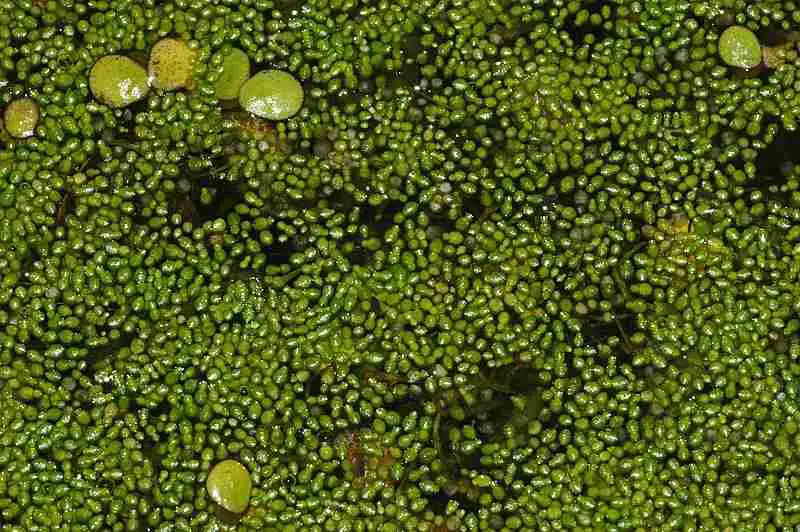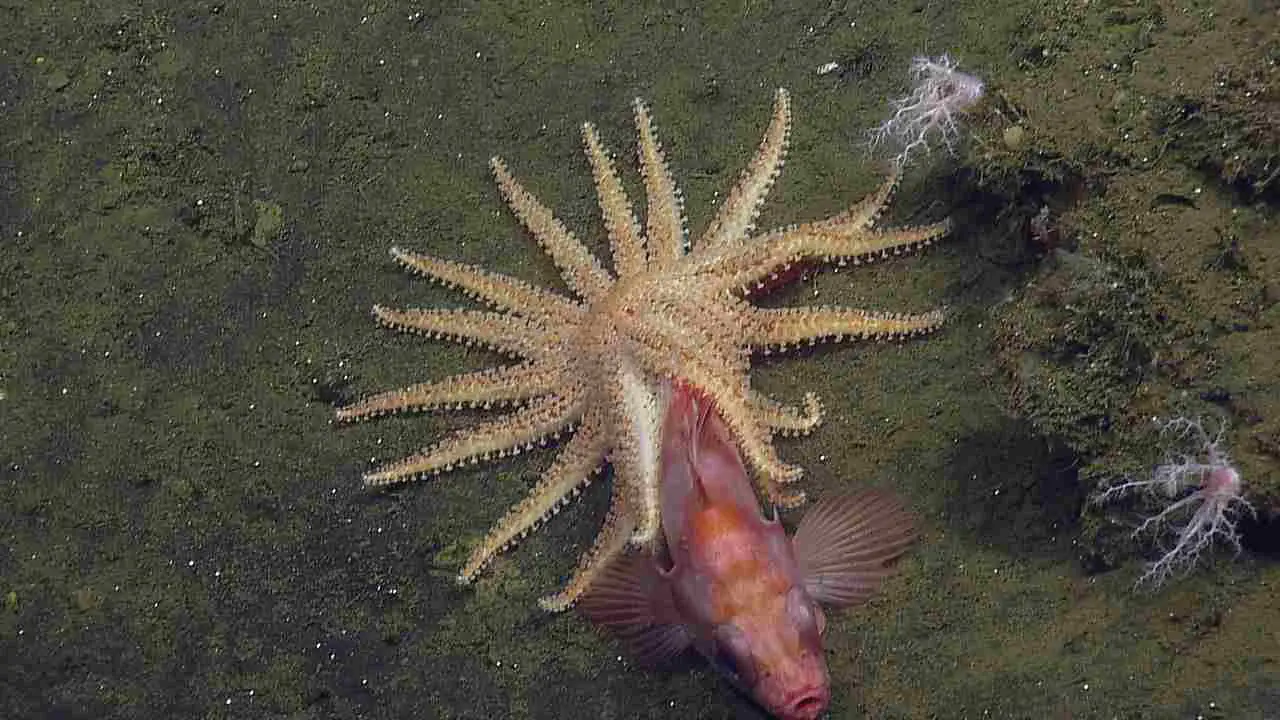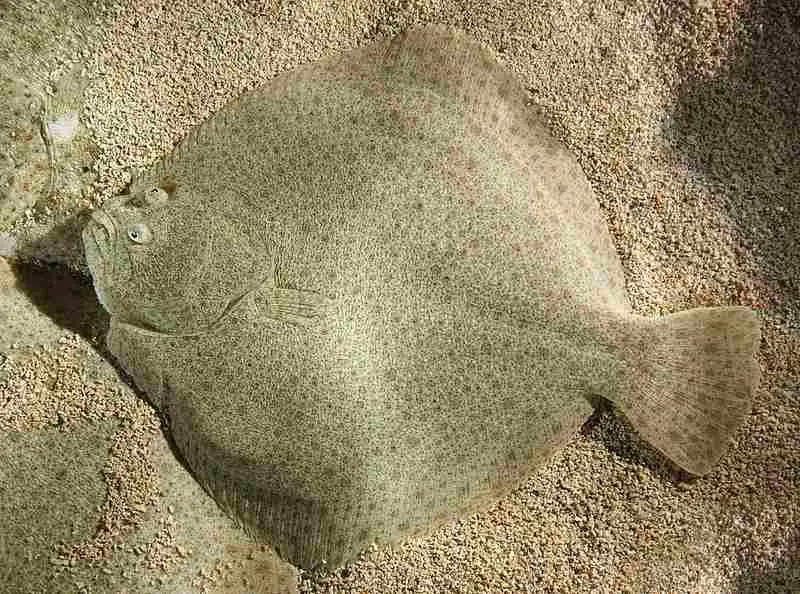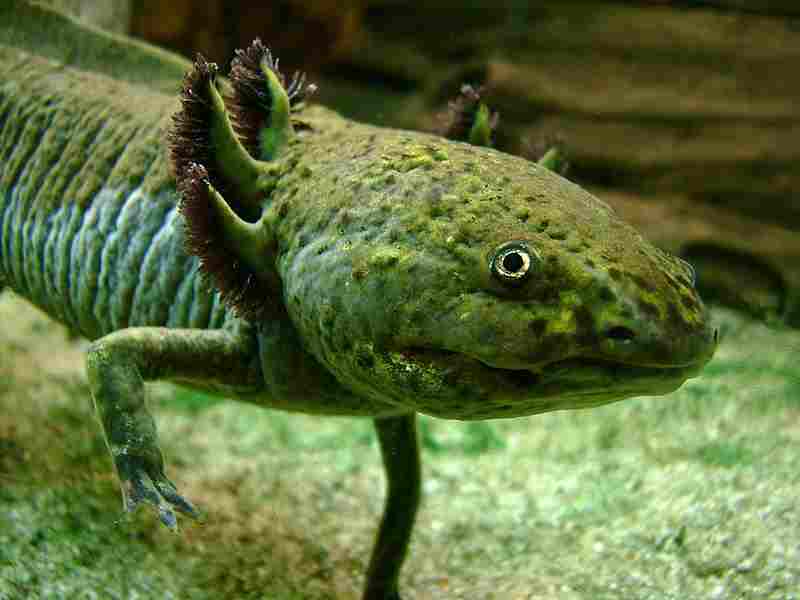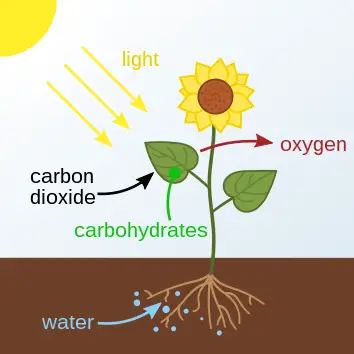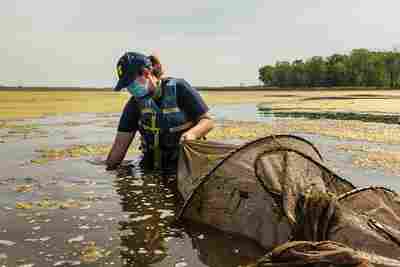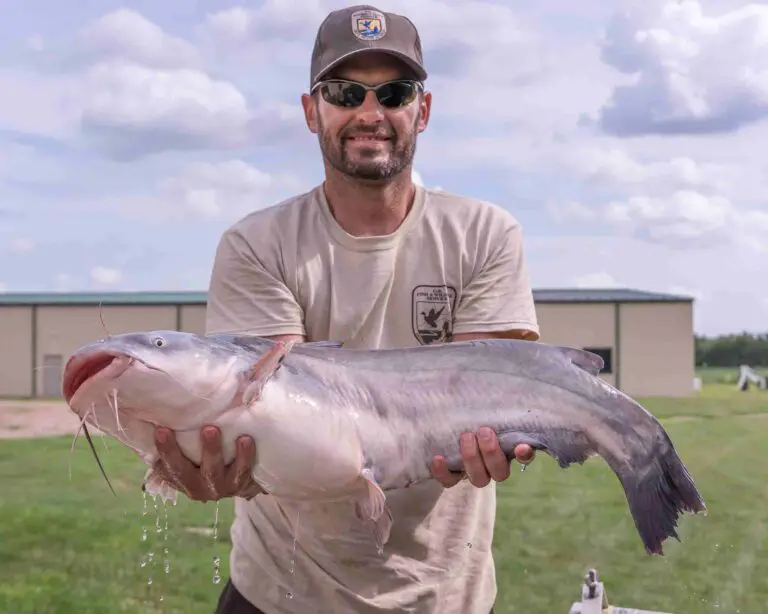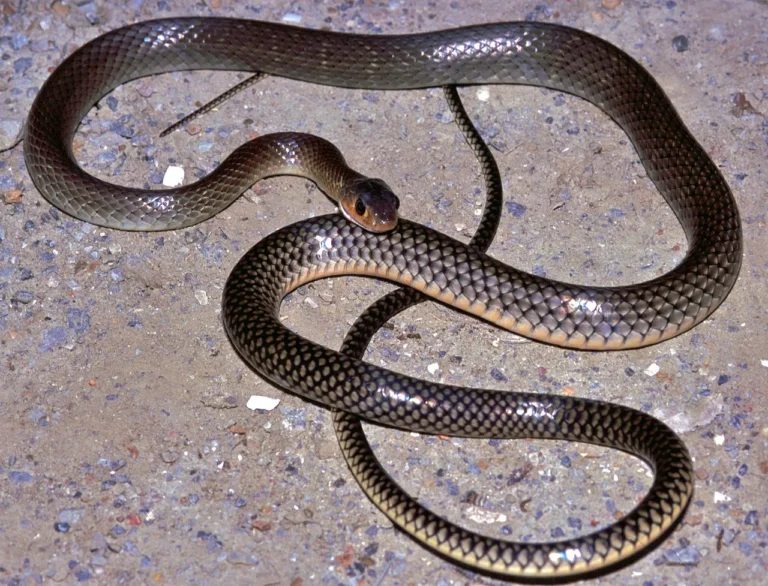17+ Detritivores In Aquatic Ecosystem Discussed
Examples of detritivores in aquatic ecosystems are Daphnia, copepods, amphipods, isopods, ostracods, Tubifex worms, and various insect larvae like midge, blackfly, mayfly, stonefly, and caddisfly. These organisms play crucial roles in nutrient cycling and decomposition processes by consuming and breaking down organic matter. They are integral to maintaining water quality and substrate health, as well as providing food sources for higher trophic levels, including fish and amphibians. Additionally, aquatic detritivores like clams, mussels, crayfish, sea cucumbers, crinoids, brittle stars, and barnacles have unique adaptations that contribute to substrate stabilization and ecosystem balance.
1. Daphnia
Daphnia, commonly known as water fleas, are small crustaceans found in freshwater environments such as lakes, ponds, and rivers. These transparent organisms, typically measuring between 0.2 and 5 millimeters in length, are key detritivores in aquatic ecosystems. They play a crucial role in the food web by consuming detritus, algae, and other microscopic particles. This feeding behavior helps in recycling organic material, contributing to nutrient cycling and maintaining water quality. Daphnia are often used as indicators of environmental health due to their sensitivity to pollutants and changes in water conditions.
The importance of Daphnia extends beyond their role as detritivores; they are also a critical food source for a variety of aquatic organisms, including fish and amphibians. Their population dynamics can significantly impact the larger food web, influencing the growth and survival of these predators. Furthermore, Daphnia exhibit unique adaptations, such as rapid reproduction and the ability to produce resting eggs, which allow them to survive in fluctuating environmental conditions. As such, Daphnia are not only fundamental in maintaining the balance of aquatic ecosystems, but they also offer valuable insights for ecological studies and environmental monitoring.
2. Copepods
Copepods are a diverse group of small crustaceans found in nearly every aquatic habitat, from freshwater ponds to the open ocean. They play a critical role as detritivores, feeding on dead organic matter, plankton, and other microorganisms. Copepods’ role in aquatic ecosystems is vital because they help break down and recycle organic materials, thereby maintaining a balanced nutrient cycle. Their ability to consume a wide range of food sources, from detritus to phytoplankton, positions them as primary consumers in many aquatic food webs, linking microscopic producers to larger organisms.
Beyond their role as detritivores, copepods are an essential food source for a variety of aquatic species, including fish larvae, small fish, and some marine mammals. Copepods’ high reproductive rates and adaptability to different environments make them resilient contributors to ecosystem stability. They also play a role in global carbon cycling, as they transport carbon to deeper ocean layers during their daily vertical migrations. This behavior has implications for climate studies, emphasizing the importance of copepods in both local and global ecosystems.
3. Amphipods
Amphipods are a diverse group of small crustaceans that inhabit both freshwater and marine environments. These creatures are critical detritivores, consuming decaying organic matter and contributing to the decomposition process. Their role in breaking down organic material helps recycle nutrients in aquatic ecosystems, supporting the growth of other organisms, including algae and bacteria. Amphipods often inhabit the benthic zone, where they play an essential role in the ecosystem’s health by aerating the substrate as they burrow and feed.
Besides their role in detritus consumption, amphipods are a significant source of food for various aquatic species, including fish, birds, and larger crustaceans. This makes them an integral part of the food web, supporting higher trophic levels. Amphipods exhibit diverse adaptations, with some species adapted to harsh environments like deep-sea hydrothermal vents, while others thrive in freshwater streams and rivers. Their versatility and resilience underscore their ecological importance, making them a crucial group in maintaining the balance of aquatic ecosystems.
4. Isopods
Isopods are a group of crustaceans that inhabit a wide range of environments, including freshwater, marine, and terrestrial habitats. As detritivores, isopods play a key role in breaking down organic matter, contributing to nutrient cycling in aquatic ecosystems. They feed on decaying plant material, dead organisms, and other detritus, helping to decompose and recycle organic matter. This activity supports the ecosystem’s overall health by maintaining substrate quality and providing essential nutrients for other organisms.
In addition to their role as detritivores, isopods are a food source for various aquatic species, including fish, birds, and other crustaceans. This makes them an essential component of the food web, linking primary consumers with higher trophic levels. Isopods come in many shapes and sizes, from the tiny freshwater species to the larger marine isopods found in deep-sea environments. This diversity allows them to adapt to various ecological niches, making them a critical part of many aquatic ecosystems.
5. Ostracods
Ostracods, also known as seed shrimp, are small crustaceans found in both freshwater and marine environments. These creatures are integral to aquatic ecosystems as detritivores, feeding on organic debris, decaying plant material, and algae. As they break down these organic substances, they contribute to nutrient recycling and decomposition processes. Ostracods’ feeding habits support ecosystem stability by helping maintain water quality and providing a source of nutrients for other organisms.
Besides their role as detritivores, ostracods are an essential food source for a variety of aquatic species, including fish, amphibians, and other crustaceans. They exhibit a wide range of adaptations, with some species capable of living in extreme conditions, such as hypersaline lakes or deep-sea environments. Ostracods’ hard exoskeletons, composed of calcium carbonate, often fossilize, providing valuable information about past aquatic ecosystems and climatic conditions. This fossilization ability makes them significant in both ecological studies and paleontological research, highlighting their broader relevance in the scientific community.
6. Tubifex Worms
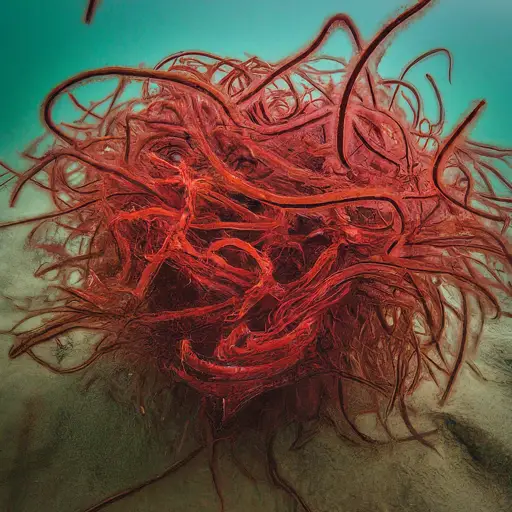
Tubifex worms are small annelids commonly found in freshwater habitats, where they play an essential role as detritivores. They feed on organic matter in the sediment, breaking down decaying plant and animal material. This process contributes to nutrient cycling and enhances the quality of the substrate in aquatic ecosystems. Tubifex worms are often found in environments with high organic content, such as sewage-contaminated waters or nutrient-rich lake bottoms, indicating their resilience to low-oxygen conditions.
These worms are also an important food source for various aquatic species, including fish and amphibians. Their presence in ecosystems supports the survival and growth of these predators. However, because they thrive in polluted or eutrophic conditions, Tubifex worms can indicate water quality issues, providing insights into environmental health. Their role in nutrient cycling and as bioindicators makes Tubifex worms significant in both ecological studies and environmental monitoring.
7. Midge Larvae
Midge larvae, belonging to the family Chironomidae, are common inhabitants of freshwater habitats, where they play a crucial role as detritivores. These larvae feed on organic matter and decomposing plant material, helping to break down and recycle nutrients in aquatic ecosystems. Their presence in sediment contributes to the decomposition process, supporting the overall health of the ecosystem. Midge larvae are often found in a range of environments, from clean, oxygen-rich waters to polluted or nutrient-rich areas, demonstrating their adaptability.
Apart from their role as detritivores, midge larvae are a key food source for many aquatic species, including fish, amphibians, and birds. This makes them an integral part of the food web, linking primary consumers to higher trophic levels. Midge larvae exhibit a variety of forms, with some species adapted to specific ecological niches, such as extreme cold or low oxygen levels. Due to their wide distribution and adaptability, midge larvae are also used as bioindicators to assess water quality and environmental health, further highlighting their importance in aquatic ecosystems.
8. Blackfly Larvae
Blackfly larvae, part of the Simuliidae family, are commonly found in freshwater environments, particularly in fast-flowing streams and rivers. As detritivores, they play a vital role in breaking down organic matter, feeding on detritus and microscopic organisms. By attaching to rocks or other substrates, blackfly larvae contribute to nutrient cycling and decomposition processes in aquatic ecosystems. Their feeding behavior, which involves filtering organic material from the water, helps maintain water quality and supports the growth of other organisms in the ecosystem.
In addition to their role as detritivores, blackfly larvae are a key food source for many aquatic species, including fish, amphibians, and other aquatic insects. This places them as an essential link in the aquatic food web, supporting the survival and growth of other organisms. Blackfly larvae are known for their adaptability to fast-flowing waters, with specialized structures that allow them to cling to substrates in turbulent conditions. This adaptation enables them to thrive in challenging environments, contributing to the resilience and stability of aquatic ecosystems.
9. Mayfly Larvae
Mayfly larvae, or nymphs, are a crucial component of freshwater ecosystems, serving as detritivores that help break down and recycle organic matter. These larvae feed on decaying plant material, algae, and other organic debris found in aquatic environments. By consuming and decomposing these materials, mayfly larvae contribute to nutrient cycling and support the overall health of the ecosystem. They are typically found in clean, oxygen-rich waters, indicating their sensitivity to pollution and environmental changes.
Mayfly larvae are also an essential food source for many aquatic species, including fish and amphibians, making them a vital part of the food web. Their presence in freshwater habitats supports the survival and growth of these predators, contributing to the overall balance of the ecosystem. Mayfly larvae exhibit diverse adaptations, with some species able to thrive in fast-flowing streams, while others inhabit still waters. This versatility, along with their role in nutrient cycling and as bioindicators, underscores the ecological importance of mayfly larvae in freshwater ecosystems.
10. Stonefly Larvae
Stonefly larvae, or nymphs, are a significant component of freshwater ecosystems, functioning as detritivores that help break down and recycle organic matter. These larvae feed on decaying plant material, leaf litter, and other organic debris found in streams and rivers. Their feeding activity contributes to nutrient cycling and supports the health of aquatic ecosystems. Stonefly larvae are typically found in clean, oxygen-rich waters, indicating their role as bioindicators of water quality and environmental health.
Beyond their role as detritivores, stonefly larvae are an essential food source for various aquatic species, including fish and amphibians. They play a crucial role in the food web, linking primary consumers with higher trophic levels. Stonefly larvae exhibit diverse adaptations, with some species capable of thriving in fast-flowing streams, while others prefer slower-moving waters. Their sensitivity to pollution and environmental changes makes them valuable for monitoring water quality, reinforcing their significance in freshwater ecosystems.
11. Caddisfly Larvae
Caddisfly larvae are a diverse group of aquatic insects that play a critical role as detritivores in freshwater ecosystems. These larvae feed on organic matter, decaying plant material, and other debris found in streams and rivers. By breaking down and recycling these materials, caddisfly larvae contribute to nutrient cycling and support the health of aquatic ecosystems. A unique characteristic of caddisfly larvae is their ability to construct protective cases using materials from their environment, such as sand, pebbles, and plant fragments, which provide both protection and camouflage.
In addition to their role as detritivores, caddisfly larvae are a significant food source for many aquatic species, including fish and amphibians. This makes them a vital part of the food web, supporting the growth and survival of other organisms. The diversity among caddisfly larvae, with over a thousand species in North America alone, allows them to adapt to various aquatic habitats, from fast-flowing streams to calm ponds. This adaptability, coupled with their sensitivity to environmental changes, makes them important bioindicators for assessing water quality and ecosystem health.
12. Snails
Snails are a diverse group of gastropods that inhabit both freshwater and marine environments, playing a crucial role as detritivores in aquatic ecosystems. These creatures feed on a variety of organic materials, including decaying plant matter, algae, and other detritus. By breaking down and consuming these materials, snails contribute to nutrient cycling and decomposition processes. Their presence helps maintain substrate quality and provides a source of nutrients for other organisms in the ecosystem. Snails can be found in a wide range of habitats, from streams and rivers to lakes and coastal environments, demonstrating their adaptability.
Apart from their role as detritivores, snails are a key food source for various aquatic species, including fish, birds, and amphibians. This makes them an important link in the food web, supporting higher trophic levels. The diversity among snails, with thousands of species worldwide, reflects their ability to adapt to different ecological niches. Some snails possess specialized adaptations, such as opercula to protect against desiccation, while others have developed specialized feeding structures to graze on hard surfaces. This diversity and versatility underscore the significant role snails play in maintaining the balance of aquatic ecosystems.
13. Clams
Clams are a group of bivalve mollusks that play a significant role as detritivores in aquatic ecosystems. Found in both freshwater and marine environments, they contribute to the breakdown of organic matter by filtering detritus, plankton, and other particles from the water column. Clams are integral to nutrient cycling, helping to clean the water and maintain the ecosystem’s health. Their filter-feeding activity can significantly affect water quality and clarity, supporting a balanced aquatic environment.
In addition to their role as detritivores, clams are a vital food source for various aquatic species, including fish, birds, and other invertebrates. Clams’ ability to burrow into sediment helps aerate the substrate, promoting a healthy benthic environment. These adaptations, along with their long lifespan and varied habitats, make clams essential components of aquatic ecosystems. Their presence can also indicate the environmental health of a body of water, as they are sensitive to pollution and habitat changes.
14. Mussels
Mussels are a group of bivalve mollusks that play a crucial role as detritivores in both freshwater and marine ecosystems. Like clams, mussels filter-feed on detritus, plankton, and other organic particles, thereby contributing to nutrient cycling and maintaining water quality. Their feeding activity helps to keep the water clean and supports the overall health of the ecosystem. Mussels often form dense colonies on rocks and other substrates, where they play an important role in stabilizing the ecosystem.
Mussels also serve as a food source for various aquatic species, including fish, birds, and other invertebrates. Their role in the food web is vital, providing sustenance for higher trophic levels. Additionally, mussels’ ability to filter large volumes of water makes them valuable for biofiltration, which can be beneficial in reducing water pollution. The sensitivity of mussels to changes in water quality and temperature also makes them useful indicators for environmental monitoring and assessing ecosystem health.
15. Crayfish
Crayfish are freshwater crustaceans that play a key role as detritivores in aquatic ecosystems. They feed on decaying plant material, dead organisms, and other organic matter, helping to break down and recycle nutrients in the ecosystem. This detritus consumption contributes to the decomposition process and supports the health of the ecosystem. Crayfish are typically found in freshwater habitats such as streams, rivers, and lakes, where they serve as important contributors to nutrient cycling and substrate aeration.
Beyond their role as detritivores, crayfish are an essential food source for various aquatic species, including fish, birds, and mammals. They play a critical role in the food web, connecting primary consumers with higher trophic levels. Crayfish are known for their adaptability and resilience, allowing them to thrive in various environments, from fast-flowing streams to still ponds. Their ability to burrow into sediment helps aerate the substrate, further contributing to ecosystem health.
16. Sea Cucumbers
Sea cucumbers are echinoderms that play a vital role as detritivores in marine ecosystems. They inhabit various ocean environments, from shallow coastal areas to deep-sea habitats. Sea cucumbers feed on detritus, plankton, and other organic matter, contributing to nutrient cycling and decomposition processes. As they consume and break down these materials, they help maintain substrate quality and support the health of the ecosystem. Sea cucumbers often play a crucial role in cleaning the ocean floor, promoting a balanced marine environment.
In addition to their role as detritivores, sea cucumbers are a key food source for many marine species, including fish, sea turtles, and other echinoderms. This positions them as an integral part of the food web, supporting higher trophic levels. Sea cucumbers are known for their unique adaptations, such as the ability to eject internal organs as a defense mechanism and their role in bioturbation, where they disturb and aerate the substrate. These adaptations, along with their role in nutrient cycling, underscore the significance of sea cucumbers in maintaining the health of marine ecosystems.
17. Crinoids
Crinoids, also known as sea lilies or feather stars, are marine echinoderms that play an important role as detritivores in aquatic ecosystems. They inhabit various marine environments, from shallow coastal areas to deep-sea regions. Crinoids feed on detritus, plankton, and other organic particles, contributing to nutrient cycling and supporting the health of the ecosystem. Their feeding behavior involves filtering organic material from the water, helping to maintain water quality and support a balanced marine environment.
Crinoids are also an essential food source for various marine species, including fish and other echinoderms. They are a critical component of the food web, linking primary consumers with higher trophic levels. Crinoids exhibit diverse adaptations, with some species capable of attaching to substrates while others are free-swimming. Their fossil record is extensive, providing valuable insights into the history of marine ecosystems and their evolution. This combination of roles as detritivores and fossil markers emphasizes the ecological and paleontological significance of crinoids.
18. Brittle Stars
Brittle stars are a type of echinoderm that play a crucial role as detritivores in marine ecosystems. They inhabit various marine environments, from shallow waters to deep-sea regions, where they feed on detritus and other organic matter. This feeding behavior helps break down and recycle organic material, contributing to nutrient cycling and supporting the health of marine ecosystems. Brittle stars are often found on the ocean floor, where they play an important role in maintaining substrate quality and promoting a balanced environment.
In addition to their role as detritivores, brittle stars are a significant food source for many marine species, including fish and other echinoderms. They play an integral role in the food web, supporting the growth and survival of higher trophic levels. Brittle stars exhibit unique adaptations, such as their ability to regenerate lost arms, which contributes to their resilience in the ecosystem. Their role in nutrient cycling, coupled with their importance in the food web, underscores the significance of brittle stars in maintaining the health of marine ecosystems.
19. Barnacles
Barnacles are a group of crustaceans that play an important role as detritivores in marine ecosystems. They are commonly found attached to various substrates, such as rocks, ship hulls, and piers, where they feed on detritus and other organic matter. This filter-feeding behavior contributes to nutrient cycling and helps maintain water quality in the ecosystem. Barnacles often form dense colonies, which can stabilize substrates and provide habitat for other organisms, further supporting the health of marine ecosystems.
In addition to their role as detritivores, barnacles are an essential food source for various marine species, including fish, birds, and other crustaceans. This makes them a critical link in the food web, connecting primary consumers with higher trophic levels. Barnacles are known for their unique adaptations, such as their ability to produce calcium carbonate shells that protect them from predators and harsh environmental conditions. Their role in nutrient cycling and substrate stabilization highlights their significance in maintaining the balance of marine ecosystems.
*Summary
-
Daphnia: Small crustaceans; contribute to nutrient cycling; food source for fish and amphibians.
-
Copepods: Found in both freshwater and marine environments; link microscopic producers to larger organisms.
-
Amphipods: Diverse group; key food source for many aquatic species; help aerate substrates.
-
Isopods: Crustaceans that break down organic matter; inhabit a wide range of environments.
-
Ostracods: Known as seed shrimp; contribute to nutrient cycling; significant as fossil indicators.
-
Tubifex Worms: Annelids that feed on organic matter; indicators of polluted environments.
-
Midge Larvae: Larvae of Chironomidae; crucial food source for fish; used as bioindicators.
-
Blackfly Larvae: Larvae of Simuliidae; help maintain water quality; adapt to fast-flowing streams.
-
Mayfly Larvae: Found in clean, oxygen-rich waters; significant in nutrient cycling and food webs.
-
Stonefly Larvae: Important food source for fish and amphibians; contribute to substrate aeration.
-
Caddisfly Larvae: Construct protective cases; contribute to nutrient cycling; support food webs.
-
Snails: Gastropods that feed on organic matter; provide nutrients for other aquatic organisms.
-
Clams: Bivalve mollusks; help maintain water quality; sensitive to pollution.
-
Mussels: Bivalves; filter-feed on detritus; bioindicators for environmental monitoring.
-
Crayfish: Freshwater crustaceans; break down organic matter; aerate sediment.
-
Sea Cucumbers: Echinoderms; clean the ocean floor; important for substrate aeration.
-
Crinoids: Echinoderms known as sea lilies or feather stars; play a significant role in nutrient cycling.
-
Brittle Stars: Echinoderms that help maintain substrate quality; essential part of the food web.
-
Barnacles: Crustaceans; provide habitat for other organisms; contribute to nutrient cycling.
| Aquatic Detritivores |
Key Characteristics
|
| Daphnia |
Small crustaceans; nutrient cycling; food for fish and amphibians.
|
| Copepods |
Found in freshwater and marine environments; link microscopic producers to larger organisms.
|
| Amphipods |
Diverse group; key food source for many aquatic species; help aerate substrates.
|
| Isopods |
Crustaceans that break down organic matter; inhabit a wide range of environments.
|
| Ostracods |
Known as seed shrimp; contribute to nutrient cycling; significant as fossil indicators.
|
| Tubifex Worms |
Annelids that feed on organic matter; indicators of polluted environments.
|
| Midge Larvae |
Larvae of Chironomidae; crucial food source for fish; used as bioindicators.
|
| Blackfly Larvae |
Larvae of Simuliidae; help maintain water quality; adapt to fast-flowing streams.
|
| Mayfly Larvae |
Found in clean, oxygen-rich waters; significant in nutrient cycling and food webs.
|
| Stonefly Larvae |
Important food source for fish and amphibians; contribute to substrate aeration.
|
| Caddisfly Larvae |
Construct protective cases; contribute to nutrient cycling; support food webs.
|
| Snails |
Gastropods that feed on organic matter; provide nutrients for other aquatic organisms.
|
| Clams |
Bivalve mollusks; help maintain water quality; sensitive to pollution.
|
| Mussels |
Bivalves; filter-feed on detritus; bioindicators for environmental monitoring.
|
| Crayfish |
Freshwater crustaceans; break down organic matter; aerate sediment.
|
| Sea Cucumbers |
Echinoderms; clean the ocean floor; important for substrate aeration.
|
| Crinoids |
Echinoderms known as sea lilies or feather stars; contribute to nutrient cycling.
|
| Brittle Stars |
Echinoderms that help maintain substrate quality; essential part of the food web.
|
| Barnacles |
Crustaceans; provide habitat for other organisms; contribute to nutrient cycling.
|
